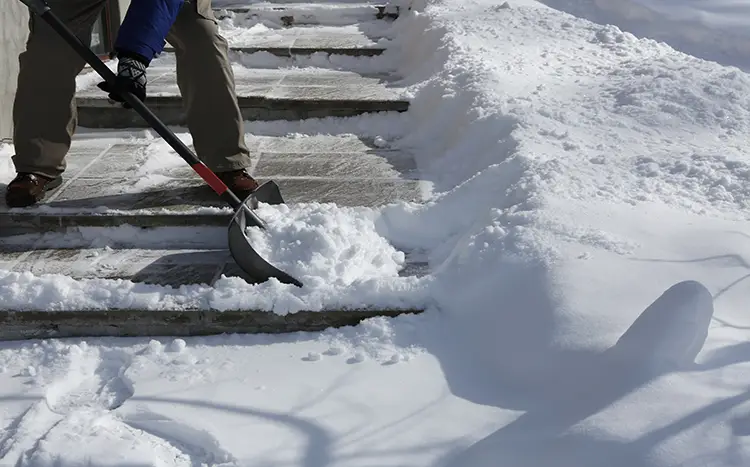Tips for a Winter Move
Published on December 7, 2023 | 5 Minute read

Melanie
Ortiz Reyes
Content Specialist
Moving during the winter months brings its unique set of challenges, from unpredictable weather to potential logistical hurdles. However, you can have a smooth and successful winter move with careful planning and strategic preparations.

Weather-Resilient Planning
Schedule in Advance
Winter is a popular time for moving companies, and scheduling your move well in advance is crucial. Locking in your preferred moving date early ensures availability and allows you to plan around potential weather disruptions. Be flexible with your dates, as this can provide more options and potentially save you money.
Keep an Eye on the Weather Forecast
Stay vigilant about the weather forecast leading up to your move day. Winter weather can be unpredictable, and staying informed allows you to make real-time adjustments to your plans. Be prepared for changes and have a contingency plan in case of extreme weather conditions.
Hire Professional Movers
Consider hiring professional movers with experience in winter relocations. Experienced movers are equipped to handle adverse weather conditions and have the necessary tools and equipment to protect your belongings. Research and choose a reputable moving company with positive reviews and a track record of successful winter moves.

Protecting Your Belongings
Invest in Quality Packing Materials
Winter moves often involve exposure to moisture, so invest in high-quality packing materials to protect your belongings from the elements. Use sturdy, waterproof boxes, plastic wrap, and packing tape to create a barrier against rain, snow, or sleet.
Wrap Fragile Items with Care
Fragile items can be more susceptible to temperature changes, so take extra precautions when packing them. Wrap delicate items in bubble wrap, blankets, or towels to provide insulation and prevent breakage. Label boxes containing fragile items clearly to make sure they receive special attention during the move.
Consider Climate-Controlled Storage
If there's a gap between moving out and moving into your new home, consider utilizing climate-controlled storage for your belongings. This protects items that may be sensitive to extreme temperatures and ensures they remain in optimal condition during the transitional period.

Winterizing Your Home
Prep Both Homes
Before the move, winterize both your current and new homes. This includes checking for drafts, sealing windows and doors, and ensuring that both properties are adequately heated. A warm and comfortable environment is not only essential for you and your family but also helps prevent damage to your belongings.
Clear Pathways and Driveways
Clearing snow and ice from pathways, driveways, and entry points is crucial on moving day. This provides a safe and accessible route for both you and the movers. Use ice melt or sand to prevent slippery surfaces, reducing the risk of accidents and facilitating a smoother move.
Protect Flooring
Winter moves can bring mud, snow, and slush into your home. Protect flooring by using heavy-duty tarps, plastic sheets, or old rugs along high-traffic areas. This not only preserves the cleanliness of your home but also prevents accidents due to slippery surfaces.

Essentials for Moving Day
Dress Appropriately
Wear layers and dress warmly on moving day. While you may be exerting physical effort, the winter weather can be harsh, and staying warm is essential for your well-being. Don't forget to wear waterproof boots with good traction to navigate potentially slippery surfaces.
Pack an Essentials Box
Prepare a box with winter moving essentials, including warm clothing, blankets, hot beverages, snacks, and any necessary medications. Having these items readily accessible ensures that you and your family stay comfortable and nourished throughout the moving process.
Plan for Early Sunset
Winter days come with shorter daylight hours, so plan to start your move early to maximize daylight. If your move extends into the evening, make sure you have sufficient outdoor and indoor lighting to maintain visibility and safety.

Post-Move Considerations
Unpack with Care
Once you've arrived at your new home, unpack with care, especially if there's lingering winter weather. Clear pathways around your new home, remove any remaining snow or ice and prioritize setting up essential areas like the bedroom and kitchen first.
Check for Damage
Inspect your belongings for any signs of damage caused by the winter move. Look for water damage, breakages, or other issues that may have occurred during transportation. If you notice any problems, document them promptly and contact your moving company to address the issues.
Winterize Your New Home
Just as you did with your previous residence, take the time to winterize your new home. Check for drafts, make sure heating systems are functioning correctly, and address any issues that may compromise the comfort and safety of your new living space.
A winter move may present unique challenges, but with thoughtful planning and preparation, you can navigate the process smoothly. By prioritizing weather-resilient planning, protecting your belongings, winterizing both homes and ensuring essentials on moving day, you set the stage for a successful winter relocation. Embrace the chill, stay organized, and make your winter move a positive and memorable experience.